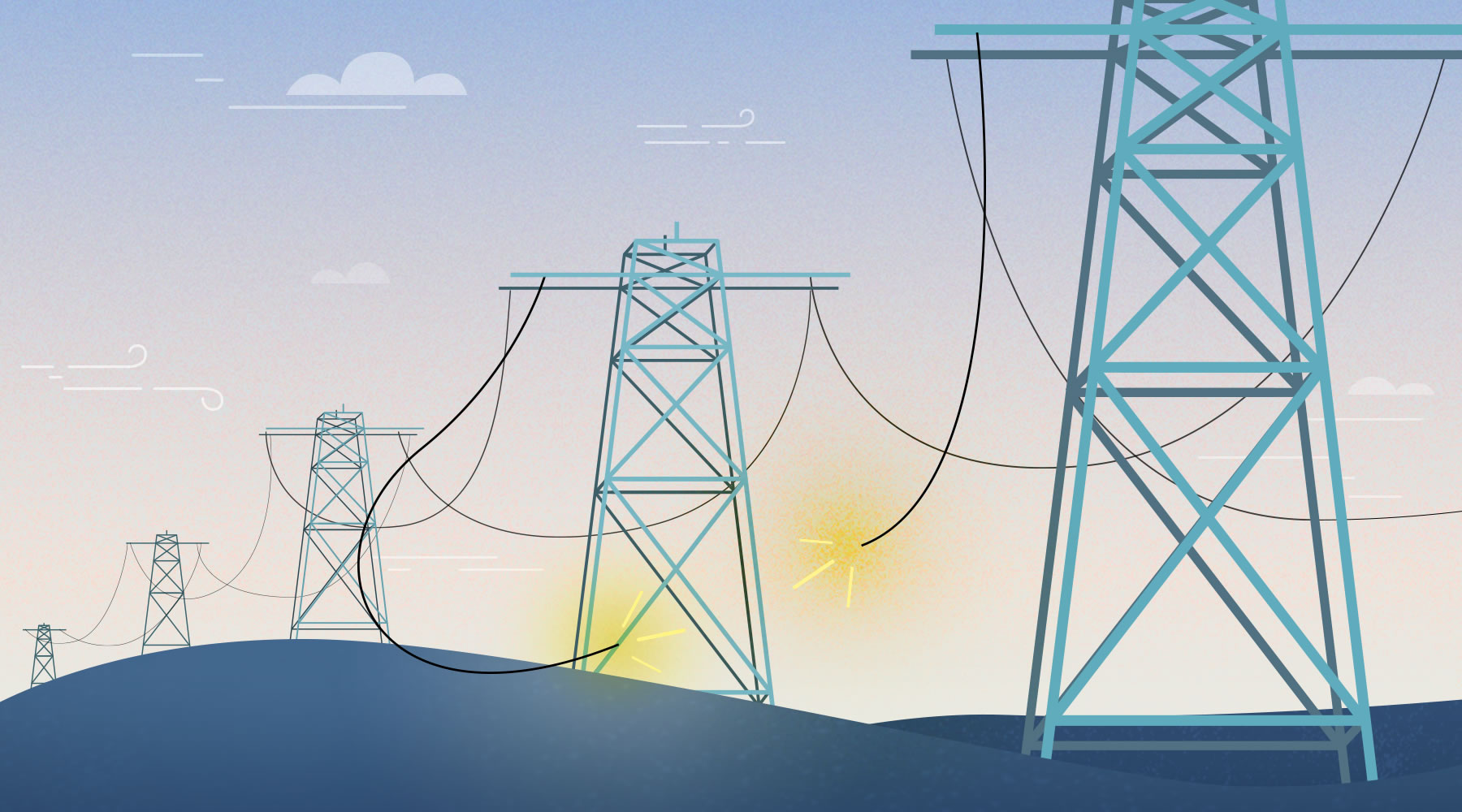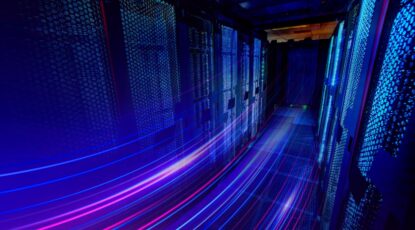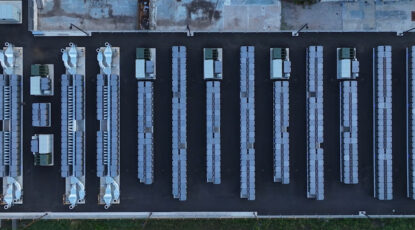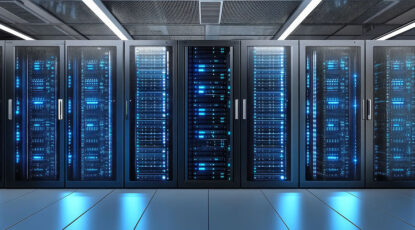1. How do power grids work?
Utilities generate electricity at power plants, and then distribute it to our homes and businesses over thousands of miles of wires. These networks comprise our power distribution grids, or what we simply call the grid.
Once created, electricity travels to a transformer that steps up the voltage for its long journey to consumers. There are 200,000 miles of high voltage transmission lines, and 5.5 million miles of lower voltage lines in the U.S.
Electricity can travel hundreds of miles before reaching a local or neighborhood substation, where the voltage is then stepped down before moving to local distribution lines. These carry the electricity to utility poles, where a transformer steps down the voltage before it enters our homes.
2. What causes power outages?
The major causes of a power outage, defined as lasting more than five minutes, include equipment failures at power generating stations, damage to substations and transmission lines, overloading of the system, and intentional power shutoffs.
Among the primary causes of blackouts are damage to transmission lines—usually the result of high winds and storms that down power lines—and by overloading the system.

Broken transmission lines often lead to power outages.
3. Why are power outages increasing in frequency and duration?
Between 2016 and 2017, the number of people impacted by outages in the U.S. more than doubled to 36.7 million, according to the Eaton Blackout Tracker. These outages also lasted twice as long as the year before, keeping the lights off for an average of nearly eight hours per disruption.
The U.S. Energy Information Agency (EIA) cites extreme weather events as the major culprit behind this trend. In fact, 9 of the top 10 most significant U.S. blackouts in 2017 were weather-related. The unprecedented weather events that swept across the nation in 2018 and 2019 are also telling – Florida’s Hurricane Michael, California’s Camp Fire, and the Midwest’s polar vortex, just to name a few. As extreme weather events escalate and put pressure on our aging and vulnerable grid, prolonged grid outages follow.
4. What’s a planned power outage?
Recently, utilities that operate in wildfire-prone areas have resorted to intentionally shutting off power to parts of their network during what’s called red flag warnings, days or even weeks of extremely high winds and warm, dry weather.
Utilities do this to avoid a scenario where a live wire is knocked loose by the wind, falls on vegetation, and starts a fire.
These Public Safety Power Shutoffs are meant to protect people. But they often put people, such as those who rely on home-based medical devices or supplies like refrigerated insulin, at risk. A lack of power to water pumps can also harm public safety by stopping firefighting, or shutting down a wastewater treatment plant. A large grocery store can lose hundreds of thousands of dollars in perishable goods, while families can’t buy food.
5. What’s the difference between a blackout and brownout?
A blackout is the full interruption of power. A brownout occurs when power generation cannot keep up and utilities dim your lights by “throttling” back the power, temporarily reducing system voltage or total capacity to prevent overload.
During brownouts, the impact can extend beyond dimming lights—critical equipment in homes or businesses may be disrupted or go offline entirely.

A blackout will shut off lights, while a brownout causes lights to dim or flicker.
6. How do fires start from power lines?
Strong winds can topple trees or blow branches onto power lines, pulling them down and causing them to arc—jump like whips—and send sparks into dry vegetation. Wind-driven wildfires in dry areas can quickly threaten human life.
Though trees are a major cause of these fires, they don’t have to even make contact with wires to be dangerous. A voltage surge in the line can cause it to arc to a nearby tree. The current in the tree can kill anyone near it and start a fire.
The aging wooden transmission poles are also susceptible to toppling over during high winds and extreme weather, further increasing fire risk.

Strong winds can start fires by blowing branches into power lines.
7. How do you prevent power outages?
There are a variety of ways. One solution is to move more power lines underground. (In some areas of the country, 80 percent of power lines are overhead.) But burying them could take a decade or more. In the case of Northern California’s power lines, which have started several devastating blazes, it would cost an estimated $3 million per mile, or a total of about $243 billion.
Another way is by using distributed energy generation technologies that are specifically configured as microgrids. These are small-scale, onsite power generation resources located close to the businesses and residents they serve. These bypass the need for thousands of miles of vulnerable transmission lines.
8. What is a microgrid?
A microgrid is a decentralized power system that can disconnect from the main grid and operate independently of it, reducing the frequency and severity of power outages and strengthening energy resilience for businesses and residents. Microgrids, which can be made up of fuel cells, generators, solar, and batteries, also create islands of safe space during blackouts for medical baseline customers, hospitals, grocery stores, college campuses, large businesses, and beyond.
Because they offer always-on energy, microgrids are increasingly used by large businesses to shield against power outages, which in the case of a manufacturer’s production line can mean millions of dollars in lost revenue and in labor costs.

A microgrid can be completely disconnected from the larger grid, providing continuous power even when the grid goes down.
9. How does a microgrid work?
A microgrid typically maintains the same level of voltage as the main utility grid. If there’s a drop in power, or a full interruption, the microgrid can take over as primary power, either manually or automatically, to its source, without missing a beat.
10. Why are fuel cells the best building blocks for a microgrid?
Fuel cells are a key solution to the vulnerability of the main power grid because they deliver onsite, always-on, and reliable power. During normal operations and instances of power outages, fuel cell–powered microgrids maintain business continuity for large commercial consumers like big box stores, data centers, hospitals, college campuses, and grocery stores.
Fuel cells are the best building blocks for microgrids as they utilize the robust underground gas network, which is available 24/7 and does not rely on the electric grid.
The fuel cells use an electrochemical process to oxidize natural gas to create electricity. They produce only water and zero polluting particulate matter. They can run on renewable biogas from agricultural facilities, landfills, and wastewater treatment plants, and on hydrogen, with no pollutants and zero carbon emission.
Microgrids that use fuel cells improve local air quality and can seamlessly integrate with existing renewable resources like solar and wind, and battery storage. Because they sit within communities, they allow communities to be stewards of their own public health.



